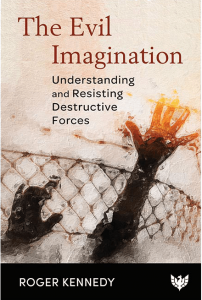 Dr Roger Kennedy is a consultant child and adolescent psychiatrist and an adult psychoanalyst. He was an NHS consultant in charge of the Family Unit at the Cassel Hospital for nearly 30 years, before going totally into private practice ten years ago. He was chair of The Child and Family Practice in Bloomsbury and is still a director there. His work includes being a training analyst and seeing adults for analysis and therapy, as well as children, families, and parents at his clinic. He is a past President of the British Psychoanalytical Society, and a former expert witness in the family courts. He is well known as an author of books on psychoanalysis, interdisciplinary studies, and child and family work.
Dr Roger Kennedy is a consultant child and adolescent psychiatrist and an adult psychoanalyst. He was an NHS consultant in charge of the Family Unit at the Cassel Hospital for nearly 30 years, before going totally into private practice ten years ago. He was chair of The Child and Family Practice in Bloomsbury and is still a director there. His work includes being a training analyst and seeing adults for analysis and therapy, as well as children, families, and parents at his clinic. He is a past President of the British Psychoanalytical Society, and a former expert witness in the family courts. He is well known as an author of books on psychoanalysis, interdisciplinary studies, and child and family work.
Dr Kennedy’s new book, The Evil Imagination: Understanding and Resisting Destructive Forces, is a multi-disciplinary exploration of the concept of evil. Here, he considers what can be learnt from investigating humanity’s evil tendencies.
The Evil Imagination arose out of a wish to understand what can make ordinary people, particularly when part of a group, commit atrocious acts of violence, the kind often labelled as “evil.” History has many examples, from the Crusades to the Transatlantic slave trade, to the Holocaust and more recent genocides and acts of terror in war.
The moral philosopher Stuart Hampshire wrote that it was during his work in the Second World War as an intelligence officer, studying Himmler’s central command activities and interrogating leading Nazis in captivity, that he learned how easy it had been to organise the vast enterprises of torture and murder, and to enrol willing workers in this field, once all moral barriers had been removed by the authorities. Unmitigated evil and nastiness are as natural, it seemed, in educated human beings as generosity and sympathy; no more, and no less, natural, a fact that was obvious to Shakespeare but not previously evident to him. Indeed, one of the later chapters in the book considers what we can learn about evil from Shakespeare, in particular Macbeth, in which the king and his wife become sucked into a spiral of corruption and murderousness.
A secular definition of evil, or what I would call the ‘spectrum of evil,’ involves a whole range of extreme forms of intentional harm to others, from intended malice by an active perpetrator to indifference to suffering from the passive but complicit bystander. Each form is accompanied by psychological damage and trauma to those on the receiving end; the most destructive acts involve enduring and significant harm and, usually, the misuse of power for the wilful destruction of human beings, either physically or psychologically. Evil not only destroys the subjectivity of the victim, with the attendant loss of dignity, agency and even life, but also provokes a transformation in the subjectivity of the perpetrator who loses, passively or actively and to a greater or lesser extent, the capacity for empathy with others; the consequence of this erosion of empathy is that otherness becomes a source of prejudice and in extreme cases social and/or physical death. Sometimes, as I shall describe, the annihilation of the subject is accompanied by or motivated by the fantasy of psychic rebirth following death, as can be seen in some serial killers, terrorists and as part of the Nazi ideology of creating a new society cleansed of non-Aryans.
My emphasis in the book is on the nature of these attacks on the human subject, driven by destructive ideas and unconscious fantasies, or what could be labelled an ‘evil imagination,’ which occurs when the human subject becomes subject to excessively cruel external forces rather than subject of their own actions.
Evil is here to stay; it is an immovable part of our landscape. However, we can attempt to minimize or resist its impact by trying to understand evil, how it affects ordinary people and how it shatters world views and trust in others. If we do not understand evil and the evil imagination, we will be ill-equipped to root it out from its various sources and thus minimise its impact in the future.
From scientific evidence from social psychology, primatology, and neuroscience, which I cover in the book, human destructiveness is not a direct consequence of our animal nature, nor is it something we are usually born with, but a consequence of being human, of the developed human imagination.
There are however some examples where people have been able to resist being caught up in the vicious cycle of violence and have provided a sanctuary for those in need, a true ‘home for otherness.’ There is also increasing evidence of considerable Jewish resistance to the Nazis, and of the agency of slaves during rebellions and other resistance to the cruel plantation system.
In order to resist evil, one needs to face the dark forces of the unconscious, and the power of group processes in facilitating evil acts, as well as the social psychological forces that can impede human conscience. In addition, having a strong sense of the value of human life and agency makes resistance to evil more possible.
Roger Kennedy
The Evil Imagination: Understanding and Resisting Destructive Forces is available from our website now.
